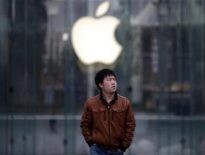(Reuters) – Is Twitter a technology platform, a media company — or both?

With Twitter’s recent moves pointing toward “media company,” there is a growing concern among technologists that a trend for greater content control will compromise both innovation and Twitter’s future in favor of short-term profits.
The days of fledging start-up are gone for six-year-old Twitter, which is now a major player in the big battles shaping the future of the Internet. With over $1 billion in investment, it has backers looking for an IPO payday — an environment that demands more than trumpeting a nifty communications protocol.
The most recent dust-up arose after a top executive announced in late June that the company would soon introduce “stricter guidelines” around how independent developers may build applications on top of Twitter. Around the same time, the social networking service LinkedIn disclosed that it no longer had permission to include Twitter streams.
Those moves are part of a larger clamp-down on how and where Twitter’s content – the stream of Tweets – is viewed by users, who collectively publish 400 million Tweets daily. Twitter’s monthly active users have steadily risen to over 140 million, although it lags far behind Facebook, which claims over 900 million.
Technologists want the service to remain an open, free-wheeling environment, where new applications can be built without restriction and innovation remains the main goal.
For Twitter, increasing control smooths the path to selling advertising and other money-making deals.
Greater control makes it easier for Twitter to sell advertising against its content — the media industry’s traditional proposition. It could also facilitate future initiatives in e-commerce, where Twitter could allow shoppers to click on deals within Tweets and take a cut of the revenue.
“The question is, ‘is Twitter the dial tone or is Twitter the content?'” said Greg Cohn, a former Yahoo executive who oversaw the company’s developer partnerships. “I think increasingly the indications are showing that Twitter is the content.”
How Twitter moves forward with its developer circle will likely shape the fate of its business, if recent history serves as a guide.
What appears to be Twitter’s increasingly ad-driven approach is upsetting third-party developers, many of whom helped the service gain popularity in its early days by providing features that Twitter itself did not, from slick desktop clients like Tweetdeck to photo-uploading tools like Twitpic.
“They’re going to keep compromising themselves over and over again because they need to make money,” said Dalton Caldwell, a programmer who founded the music streaming service imeem and App.net, a software toolkit for developers. “We can’t fault them for following their business model,” he said. “But it’s going to disappoint us. It’s a shame.”
“WE’RE NOT A MEDIA COMPANY”
Twitter’s ad business began to take shape after the 2010 ascension of CEO Dick Costolo, who defined the company’s core business of selling ads as “promoted tweets” within the Twitter stream, and selling “trending topics.” Twitter aims to show individual users relevant promoted tweets by deducing interests from the accounts a user follows.
Costolo has significantly ramped up Twitter’s sales operations, expanding the team from a handful of employees to over 250 around the world. He’s also built out the content offerings with everything from an expanded “Discover” feature, which presents popular stories being shared on Twitter in a news-like format, to special events such as Twitter chats and even originally produced video that’s integrated with major ad campaigns.
Still, Costolo has consistently rejected the notion of Twitter as a media company, instead characterizing the service as nothing more than a new-fangled distribution network.
“We’re not a media company,” Costolo said in January at a media industry conference hosted by All Things D. “We’re in the media business. We distribute traffic.”
That stance helps assuage concerns on the part of the many media companies that use Twitter extensively that the platform is not a competitor. Twitter, in fact, is aiming for deeper partnerships with media firms with new offerings such as “expanded Tweets.”
It has also suited Twitter to pose as a tech company when it comes to potential regulatory and legal burdens, said Lou Kerner, founder of the Social Internet Fund.
Twitter has adopted the legal position that it has no ownership of individual tweets. The matter came to the fore in May, when a New York court ordered the company to hand over information about a user who was arrested during an Occupy Wall Street protest.
But even though it lays no claim to the content of tweets, Twitter has moved aggressively to absorb or squash companies that have built products on top of the Twitter platform.
In 2010, Twitter acquired the maker of Tweetie, a popular iPhone client. The following year, Twitter acquired Tweetdeck, and then sought to shut down UberMedia, a company that made another competing Twitter client software.
Developers’ fears were fanned again late last month, when LinkedIn revealed that it no longer had a license to stream its users’ tweets within the professional networking web site.
Dozens of developers took to Internet forums and their personal blogs to voice their frustration, including Aaron White, a developer who quickly published a blog post declaring that he would no longer write apps for Twitter.
Twitter had abruptly cut off its data pipeline to White’s own app in January. Twitter said the app, called “Proxlet,” which lets users filter out Tweets on certain topics or mute certain accounts, had violated Twitter’s rules.
“They want to control the whole ecosystem,” White said. “If I were making a third-party app right now I wouldn’t feel too safe.”
THE PAST AS PROLOGUE?
The fortunes of other tech companies may provide a sobering guide on the how efforts to control developers translates into success.
In 2006, as the first iPhone was nearing release, Apple CEO Steve Jobs resisted allowing third-party apps onto the phone, according to his authorized biographer, Walter Isaacson. Jobs, who died last year, changed his mind only after top deputies lobbied him repeatedly, but insisted on closely screening the apps and keeping tight control over Apple’s product.
The App Store — which today offers over a half-million apps curated by Apple — has emerged as a major success, helping propel the iPhone’s popularity and supporting a lucrative industry of app developers.
Contrast Apple’s fortunes with MySpace, the once-dominant social network whose decline began around the same time.
In 2006, after News Corp. acquired Myspace, divisions emerged over the issue of third-party developers. MySpace executives resisted ceding control of the platform, while Ross Levinsohn, the head of News Corp.’s digital division and now interim CEO of Yahoo, pushed for more openness, former News Corp. employees said.
A year later, in 2007, MySpace competitor Facebook opened its API, a move that eventually gave rise to popular Facebook apps like FarmVille, the hit game by Zynga Inc., and Spotify, the music streaming service — all of which bolstered Facebook’s transformation into a sprawling network.
But even as Facebook grew, it faced regular complaints that it was neglecting its developer community.
“The relationship between a developer and a platform is a very delicate one,” Cohn said. Twitter’s growing pains, he added, are “nothing too different from what any platform goes through as they mature.”
(Reporting By Gerry Shih; Editing by Leslie Adler)





